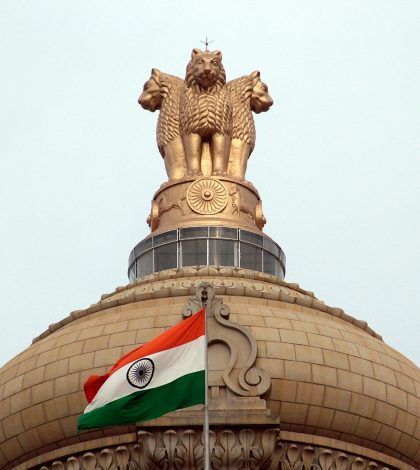India after 74 years of Independence, still hasn’t stopped competing with the foreign superpowers. 200 years of British rule soaked away all of India’s wealth and resources. But what it couldn’t take away from the people of this country was the hope of being free.
Since 1947 India has been striving hard to keep up with the fast-paced growth of the world around it. India today is not in any way similar to the kind of India it was six to eight decades ago. Earlier, nobody knew what to do with a cell phone, a laptop or an internet connection. Today, on the contrary, from every kid to every adult, everyone knows that they can survive any situation if they have a good cell phone in their hands and a stable internet connection. The process of digitization has been on the track for many years now. The beginning of Digitization in India can be said to date back to the time when computers first came into existence. And it has been evolving since then, the invention of computers have changed the attitudes of human beings completely. The way we communicate, bank, shop, how we entertain ourselves, everything is related to the use of a computer. The prime minister of India, Shri Narendra Modi made a very ruminative comment about the digitization of India. He said, and I quote, “Every Indian must have a smartphone in his or her hand and every field must be covered by a drone”. He was clear about the fact that digital technology must be low-cost, developmental, inclusive, and significantly home-grown and it should bridge the digital divide and escort in digital involvement.
The initiative was taken by the Government of India. Prime Minister Shri Narendra Modi established the concept of Digital India on the 1st of July, 2015 with the aim of providing high-speed internet network access to rural areas and improving their digital literacy. India today is home to more than 75 crore smartphones, 133 crore Aadhar cards, more than 80 crore internet users, has 4G and is now accelerating towards 5G and has among the lowest data charges in the world. After almost eight years of digital governance, there is concrete evidence to showcase this digital transformation. Digital India Advisory Group under the leadership of the Minister of Communications and IT, and an Apex Committee led by Cabinet Secretary, the Digital India campaign has been a very powerful source of innovative ideas and practical solutions that have been transforming the nation as a whole.
The Digital India campaign is not only working single handedly, but it has been receiving a lot of worldwide support and acclaim. Like, Mark Zuckerberg’s promise to work on WiFi hotspots in all the rural areas of India, Google’s commitment to provide broadband connections in five hundred railway stations and lastly, even Microsoft signed an agreement to provide internet connectivity to five hundred thousand villages of India.
The Digital India campaign solved most of the problems that the country had been facing for decades. The Jan-Dhan-Aadhaar-Mobile (JAM) trinity has guaranteed that the poorest receive every penny of their entitled benefits. Financial benefits worth Rs 23 lakh crore have been transferred using DBT technology in the last eight years. This has led to savings of Rs 2.22 lakh crore of public money.
Lastly, the digitization of India has reached all ends of human activity. Starting from a person waking up in the morning, eating his or her breakfast, going to their workplace, coming home, relaxing, staying fit, and every single thing is digitized. The digital transformation has made life easier by helping us keep track of our body movements which further helps us in staying fit and healthy. However, every good thing comes with some negative sides. Though the whole idea of digital transformation is to help everyone array themselves with access to the digital world, there are a lot of security and privacy issues that might come up as a result of data infringement and identity theft. It creates a shortage of skilled workers in the fields of digital technology. There are many other problems related to complete data loss and unsupervised disbursement, as online payments have made transactions a lot easier. However, the aim of Digital India is to bring greater good to human society. So it’s very debatable to say that if the digitization of India is a boon or curse as different people may have different perspectives about it.


